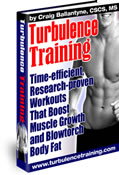What is EPOC and Why Does It Matter?
Excess Post-Exercise Oxygen Consumption (EPOC) refers to the increased rate of oxygen intake following strenuous activity. Often referred to as the "afterburn effect," EPOC helps the body restore itself to a resting state by replenishing oxygen stores, removing metabolic byproducts, and repairing muscle tissues. For athletes, understanding EPOC can be a game-changer in designing training programs that maximize fat loss, endurance, and muscle recovery.
Exercise Types That Maximize EPOC
How EPOC works in the body: During intense physical exertion, the body relies on anaerobic metabolism to produce energy rapidly. This leads to an oxygen deficit, requiring increased oxygen consumption post-exercise to return to homeostasis. Key physiological processes that drive EPOC include increased heart rate and respiration, elevated metabolic rate, restoration of muscle glycogen, and hormone regulation. The intensity and duration of exercise dictate the magnitude and duration of EPOC.
Not all workouts stimulate the same level of post-exercise oxygen consumption. High-intensity exercises, such as interval training and heavy resistance training, induce the most prolonged EPOC effect. Studies show that high-intensity interval training (HIIT) can sustain elevated calorie burn for up to 24 hours post-workout, compared to steady-state cardio, which results in a significantly lower EPOC duration. Strength training with compound movements such as squats, deadlifts, and bench presses also contributes to a prolonged afterburn effect.
The Impact of EPOC on Fat Loss and Metabolism
For athletes aiming to reduce body fat while maintaining lean muscle mass, EPOC can be an essential tool. The prolonged increase in calorie expenditure after exercise enhances fat oxidation, making it a strategic method for weight management. This metabolic boost is particularly beneficial for endurance athletes and those in weight-class sports who need to optimize their body composition without sacrificing performance.
While high-intensity training increases EPOC, excessive training without adequate recovery can lead to overtraining syndrome, increased cortisol levels, and muscle breakdown. Athletes must balance their training intensity with sufficient recovery periods, including active recovery workouts, adequate sleep, and proper nutrition. Consuming a protein-rich meal post-exercise helps accelerate muscle repair and supports the recovery phase linked with EPOC.
Scientific Insights: What Research Says About EPOC
Recent studies indicate that EPOC contributes to approximately 6-15% of total energy expenditure after a workout. While this percentage may seem modest, it accumulates over time, significantly impacting overall energy balance. Additionally, research highlights that workouts exceeding 70% of VO2 max (the maximum rate of oxygen consumption) result in higher and longer-lasting EPOC compared to moderate-intensity exercises. These findings emphasize the importance of intensity in training for maximizing EPOC benefits.
Optimizing Training for Maximum EPOC Benefits: To effectively leverage EPOC, athletes should focus on incorporating short bursts of high-intensity efforts combined with resistance training. Sprint intervals, circuit training, and metabolic resistance workouts are excellent methods to elevate post-exercise oxygen consumption. Additionally, progressive overload—gradually increasing weights and intensity—ensures continuous adaptation and maximized metabolic response.
Common Myths About EPOC
Despite the proven benefits of EPOC, several misconceptions persist. One common myth is that longer workouts equate to greater EPOC. In reality, intensity matters more than duration; shorter, high-intensity sessions generate higher EPOC levels than prolonged low-intensity workouts. Another myth is that EPOC alone leads to substantial weight loss. While EPOC enhances energy expenditure, overall caloric intake and training consistency play a crucial role in fat loss.
For athletes looking to enhance performance, burn fat efficiently, and optimize recovery, understanding and applying EPOC principles can be invaluable. By focusing on high-intensity training, strategic recovery, and proper nutrition, athletes can harness the afterburn effect to support their fitness goals. As research continues to evolve, integrating scientifically-backed training methods ensures that EPOC remains a key factor in athletic success.
References: Scientific literature supports the role of EPOC in metabolism, fat oxidation, and athletic performance. Studies in sports science and human physiology provide evidence of its benefits, though individual responses may vary based on fitness level and training background.













